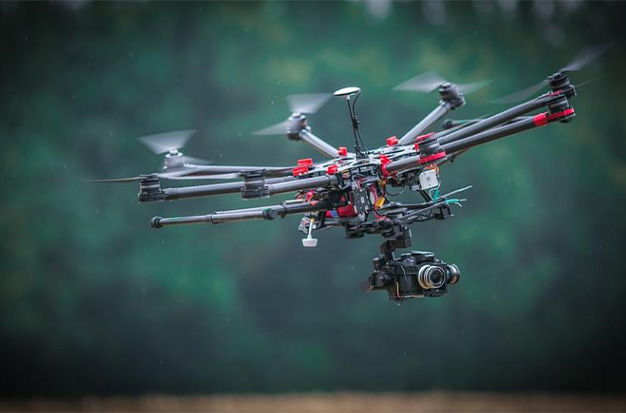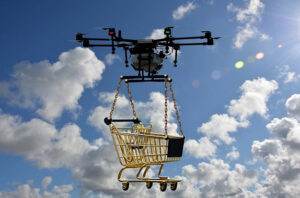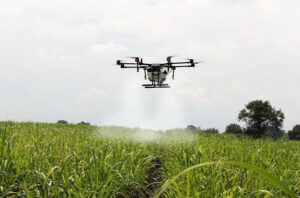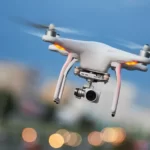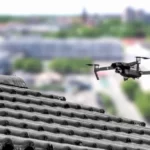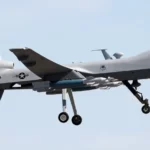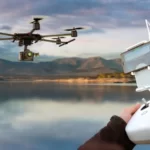Drone photography has developed into a crucial component of real estate photography, but getting started can be difficult due to a confusing regulatory environment, a completely new set of equipment considerations for both photos and videos, and the difficulties of shooting from an unfamiliar perspective. Fortunately, in this primer on real estate drone photography, I’ll break down everything you need to know to get started, including why drone photography is so important for your business and how to comply with all FAA requirements.
Table of Contents
Benefits Of Using Drones For Real Estate Photography
Since real estate drone photography is still new, one advantage is that it will make your listings stand out.
However, there are many other advantages to using drone photography in real estate marketing that will outlast its status as cutting edge.
Show Dimensions On The Property
Although they offer a unique perspective, handheld cameras often struggle to accurately capture dimensions and spatial relationships.
Before they take a tour in person, prospective buyers can learn more about what they’re getting from overhead drone stills. From the house, how far is that boat dock? What is the size of the patio in relation to the grassy yard, and is there a side yard? What connections are there between the garage, the yard(s), and the house?
Drone video can be incredibly effective in simulating a similar sense of space on an even grander scale for larger properties, like ranches.
Put The Property In Context
Drone photography done right can present the surroundings of a property in a way that is both impressive and simple to understand.
Sure, a map or a list of the distances to various amenities can provide a prospect with the bare necessities, but a drone photo (with a few helpful labels) can do all of that and more.
For a better sense of walkability, they could look at the state of the streets, sidewalks, and buildings in the area. They can quickly determine how easily accessible the property is to major roads and how close the property is to its neighbors. Even spotting annoyances or eyesores in the neighborhood is possible.
Highlight Inaccessible Features
Real estate agents can use drone photography to highlight amenities that would be challenging to showcase otherwise.
You won’t have to climb up there yourself to give them a thorough inspection of these features (and their condition), whether it’s a new roof or a solar-panel setup.
What Is The Best Drone For Real Estate Photography?
There are a number of high-quality consumer drone options available for real estate photography, with prices typically starting at $500 and rising to around $2,000.
Here are a few things to think about before buying a camera drone to use for real estate work before we get into our list of drones for real estate drone photography:
- Quality of the camera. You’ll require a camera of sufficient quality for professional-level photography.
- Battery life. When choosing your drone, keep in mind that you may need more flight time than an hour for an average residential shoot and even more for a commercial shoot. The last thing you want to happen is to run out of batteries in the middle of a project.
- Flight modes. Some drones have unique pre-programmed flight modes, like DJI’s Intelligent Flight modes, that enable you to automatically capture unique shots. These modes can be helpful for taking dynamic pictures for your real estate clients, whether you’re a novice or a seasoned pro.
- Payload options. If you want to attach a different camera to your drone as you gain experience, you’ll need to consider whether your drone supports customized payloads.
After discussing qualities to look for in a drone, let’s take a look at our list of suggested camera drones for real estate drone photography.
Read More: Best Drone For Real Estate
DJI Mavic Mini – For Getting Started
For those looking to get into drone photography for real estate, the DJI Mavic Mini is a great entry-level drone. You can record crystal-clear, fluid video with the 12-megapixel camera and three-axis gimbal that are included. Additionally, DJI’s QuickShots, which are pre-programmed flight maneuvers that assist you in capturing cinematic footage, allow you to practice a lot.
If you’re just starting out with drone photography, the Mavic Mini is a great option to take into consideration at around $399 in the DJI store. Even if you have no experience with filming or editing, the DJI Fly app enables you to produce images that look professional. To meet the standards for professional real estate photography as you gain experience, you might want to upgrade to a drone with a more sophisticated camera.
Key Specs/Features
- 12 MP camera
- Max flight time of 30 minutes
- Altitude Hold
- Return-to-home
- QuickShots
DJI Mavic 2 Pro – For Professional Drone Photography
Due to its small size and wide range of sophisticated features, the DJI Mavic 2 Pro is among the most well-liked drone models available. Its professional-grade camera from Swedish camera maker Hasselblad features a 1-inch CMOS sensor, 20-megapixel photography, and improved HDR and color sensitivity.
Key Specs/Features
- Still image resolution of 20 megapixels
- Video resolution of 4K 10-bit HDR Video
- Max flight time of 31 minutes
- Max speed of 45 mph (in sport mode)
- Foldable/portable for compact travel
- Intelligent flight modes
- Obstacle sensing
DJI Mavic Air 2 – For Hobbyist/professional Drone Photography
The first consumer drone with AirSense is the Mavic Air 2, which was released in 2016. which is essentially ADS-B In technology that enables the drone to detect nearby aircraft. This new drone has a staggering number of features, thanks in large part to DJI.
It will be challenging to find a comparable aircraft in this size and price range with a 34-minute flight time, 48-megapixel camera, and an 8K Hyperlapse feature. One of the most advanced portable drones on the market, it starts at $800.
Key Specs/Features
- Still image resolution of up to 48 megapixels
- Video resolution of 4K at 60 fps
- Max flight time of 34 minutes
- Max speed of 42 mph (in sport mode)
- Foldable/portable for compact travel
- Intelligent flight modes
- 8K hyper-lapse
- APAS 3.0 0bstacle avoidance
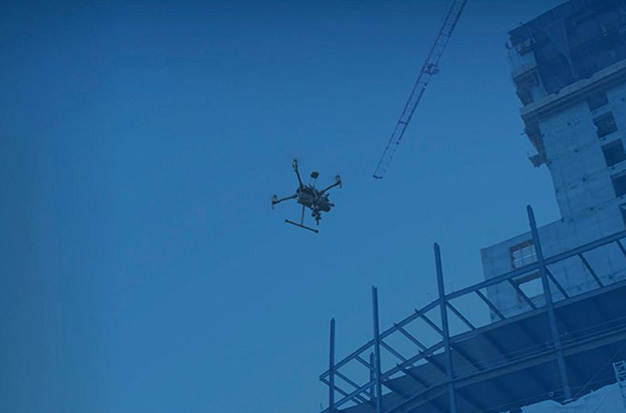
How To Get Started With Real Estate Drone Photography?
If you’re a broker or real estate agent, the first thing you should consider is whether you have the skills, time, and resources to take your own drone photos.
Although DIY may seem appealing, the truth is that without a lot of practice, you probably won’t be able to produce the rockstar photographs you’ve seen elsewhere. This is particularly true if you are brand-new to serious photography.
In addition, taking flattering photos requires a whole other set of abilities and procedures, known as drone photography. Before you take that first shaky, dimly lit picture, you’ll need to obtain a drone pilot’s license, learn how and where you can fly, and make an investment in high-quality gear. You’ll also need photo editing software and the know-how to use it effectively to get professional-looking shots.
You can hire someone to take the photos of your dreams because there are many skilled drone photographers who focus on real estate.
However, there are a few critical steps for those who want to take on the challenge of drone photography on their own.
Get Your Drone Pilot License
A Remote Pilot License from the FAA is required in order to use a drone for business. The phrase “Part 107 certificate” or “license” refers to the law that requires it and is frequently used to describe it.
You must pass an exam covering topics like airspace classifications, flight restrictions, emergency procedures, aeronautical decision-making, and more in order to obtain your license. This exam is tailored specifically to UAGs (Unmanned Aircraft General – Small).
You should enroll in at least one online training course to aid in your preparation and study.
Buy Your Photography Drone
Drone operators who specialize in real estate photography will advise you to look for the following minimum requirements:
- A 3-axis gimbal (but a 6-axis gimbal is better)
- At least 12 MP photo and 4k/30fps video capability
- RAW file setting
- Live first-person view (FPV)
- Automatic takeoff and landing
- Altitude hold
An inexpensive drone model, such as a $50 GoolRC, is recommended by seasoned drone pilots if you’re just getting started. If you crash, you’ll lose less money but can still practice maneuvering and get some decent shots.
You must think about your intended use and the ensuing needs when you are shopping. Pay attention to details such as:
- Battery life
- Range
- Transmission
- Flight safety features
- Intelligent flight modes
Others
Before taking off, you should secure the following items:
- Register your drone: Each commercial drone must have its own FAA (and possibly local) registration.
- Purchase liability insurance The majority of general policies do not cover the use of drones, so you will need a specialized policy or rider to cover you in the event that your drone causes property damage.
- Check local laws: Local governments also have their own laws in addition to the FAA. When it’s prohibited to fly a drone over private property without permission, this is the stickler for real estate photography. This makes those neighborhood-wide shots dangerous.
How To Capture Good Real Estate Photos From The Air?
Thankfully, drone photography still adheres to all of the rules of good “regular” photography. Accurate, pleasing colors are still desired, as are composition and exposure. The only distinction is in the slightly different approaches required to master these ideas.
A good composition may be more difficult for drones. You must learn how to maneuver the drone more freely than with a traditional camera along the X, Y, and Z axes. If you’re in the right airspace and the weather is right, you can compose shots anywhere between 400 feet and the ground.
The variety of compositions is greatly expanded as a result, but all the essential components are still present. Balance, positive/negative space, and maintaining a level horizon are still important considerations. Understanding which angles highlight the subject’s best qualities will help you showcase the property, which is ultimately the goal.
As I hinted at in the section on the drone’s equipment, exposure can present more of a challenge than it does with other contemporary cameras. Due to their smaller sensors, drones typically don’t have the same level of highlight or shadow recovery, even when shooting in raw.
This makes getting the exposure right even more crucial, as a shot of a shaded building entrance and a bright sky can result in a situation with a wide dynamic range. The fact that your phone’s screen isn’t the ideal platform for measuring exposure further complicates matters.
As a result, I advise frequently using the auto exposure bracketing (or 5-image burst) function and always checking the exposure using the histogram. Nearly all of my drone photos are bracketed because the extra dynamic range and margin of safety in the exposure have proven to be useful on numerous occasions. 5-image bursts are also built into most By averaging your images, DJI drones can help you increase your dynamic range.
Compared to artistic photos, I find that processing real estate photos is simpler because fewer edits are typically required. In order to increase the dynamic range of the file for many shots, I’ll merge to HDR in Lightroom. After that, cropping is all that’s needed to improve composition, along with adjusting contrast and HSL.
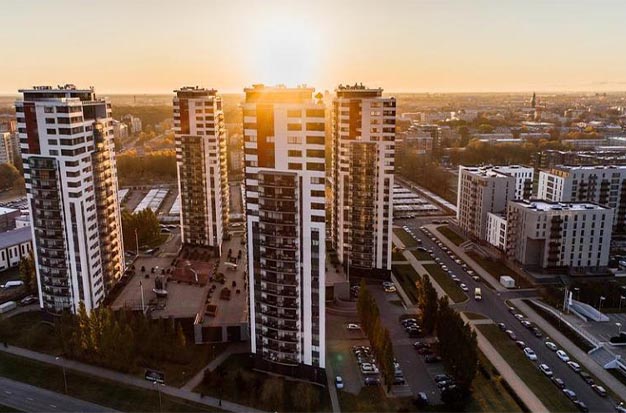
Conclusion
Drone real estate photography can be a great way to grow your business. For all of my photographic endeavors, not just real estate, I’ve come to love using a drone. With each new model, the equipment has improved, becoming more portable, with larger sensor sizes, longer batteries, and more affordable. Meanwhile, it’s simple to fly for interesting opportunities while remaining safe and legal thanks to the further refinement of licensing and rules. There has never been a better time to start using drones for real estate photography.
